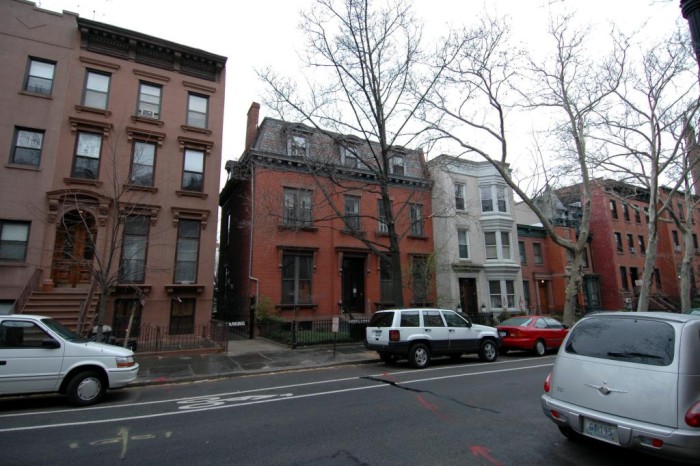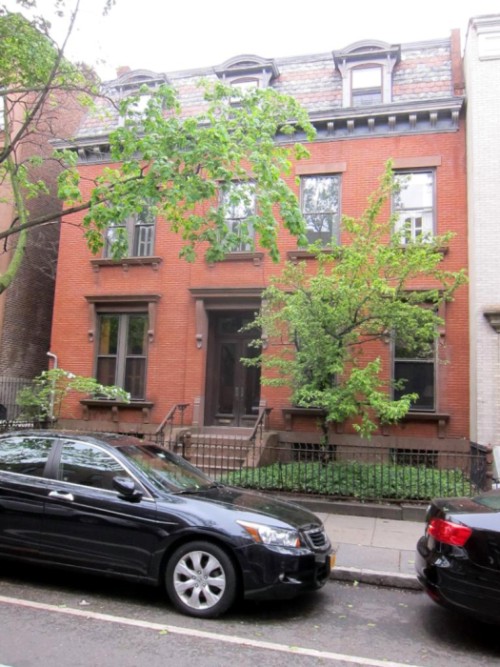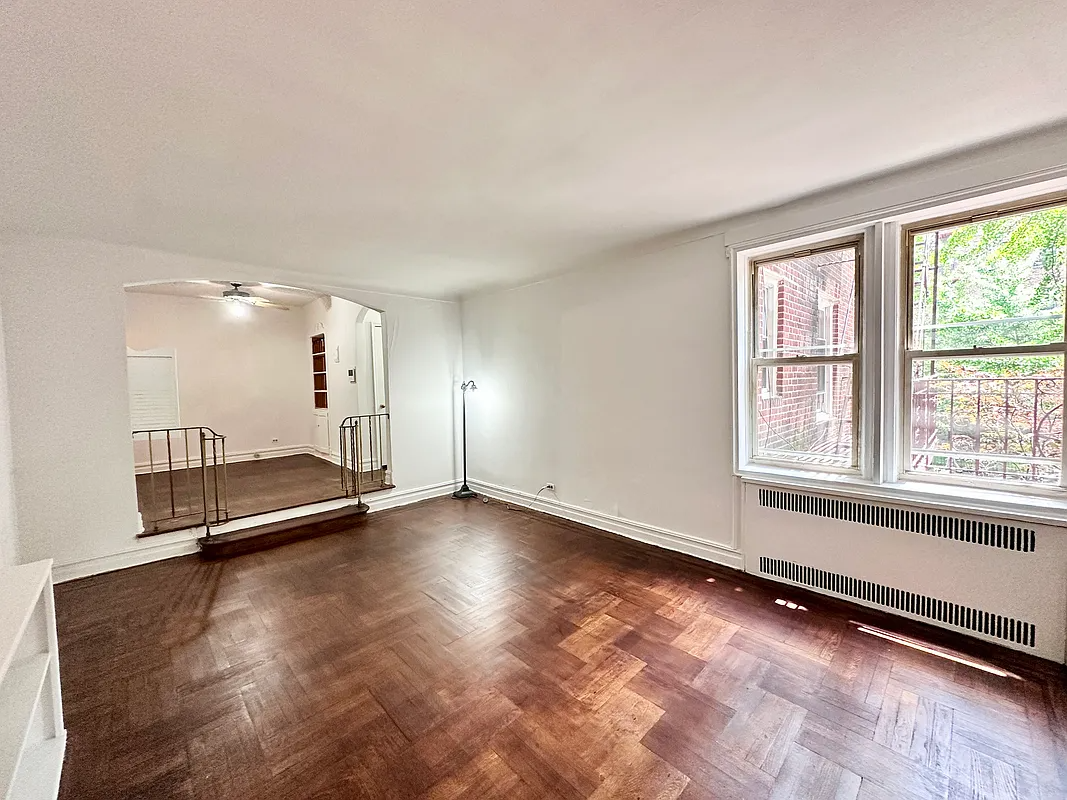Building of the Day: 340 Clinton Street
Brooklyn, one building at a time. Name: Dr. Joseph E. Clark house Address: 340 Clinton Street Cross Streets: Kane and DeGraw Streets Neighborhood: Cobble Hill Year Built: Early 1860s Architectural Style: Greek Revival Architect: Unknown Landmarked: Yes, part of Cobble Hill HD (1969) The story: The 42 foot wide single family mansion was built for…


Brooklyn, one building at a time.
Name: Dr. Joseph E. Clark house
Address: 340 Clinton Street
Cross Streets: Kane and DeGraw Streets
Neighborhood: Cobble Hill
Year Built: Early 1860s
Architectural Style: Greek Revival
Architect: Unknown
Landmarked: Yes, part of Cobble Hill HD (1969)
The story: The 42 foot wide single family mansion was built for Dr. Joseph E. Clark in the early 1860s. It’s the widest house in Cobble Hill. It was built at a time when Brooklyn was expanding outward away from its core at its harbors, and Cobble Hill, which was South Brooklyn at the time, was a quiet, well-to-do suburban retreat, with large houses on streets that were still largely undeveloped. In the decades that followed those houses would be surrounded by speculative row housing and fine churches and storefront blocks. The final addition of flats buildings and the tenement housing of Alfred Tredway White, on Warren Street, would complete the neighborhood’s building stock for a century.
Dr. Clark was a prominent physician, and well-known and respected. He was the president of St. Peter’s Hospital in Cobble Hill, and was often consulted by the police in their investigations. But his life in this house was not always happy. On August 18th, 1871, his young son fell over the bannister of the stairway, and fell two flights to the floor. He was killed instantly. A week later, his beloved wife Frances followed her son to the grave, perhaps of a broken heart. She died here at the age of 43, on August 26th, leaving Dr. Clark and his daughter, Grace.
Dr. Clark moved from 340 Clinton and moved to another home further up Clinton Street, closer to his hospital. In 1884, he became embroiled in a scandal over the investment of a trust for the estate of Clara W. Perry. Clark was one of three executors of the estate, and was in charge of investing the money until its recipient, Mary Fanny Clark, a relative, turned 18. There were questions as to how he had invested the money, and why he had to take out a mortgage on 340 Clinton in order to pay the trust. But the story disappeared from the news, so the courts and Miss Clark’s lawyers must have been satisfied with the answers.
Dr. Clark must have been easily rattled in his personal life, most understandably. He made the papers again, albeit only a paragraph, in 1894, when he thought his daughter Grace had eloped with another doctor from the hospital. He went to the police to find her. It turned out that although they were friends, Grace and her friend had not eloped. She had been out with a female friend, and the doctor in question was home with his wife. Grace found the whole thing amusing. Her father and the police not so much.
A later owner of the house was also a doctor; Dr. P. J. Prendergast. He lived in the house in the early 1900s, and Dr. Clark may have sold him the house. They ran in the same circles and probably knew each other. Dr. Prendergast came from a family of Irish clergy. All three of his brothers were priests. In 1899, one brother was a priest in Ireland, another was rector of the Church of the Epiphany in Manhattan, and the third, Coadjutor Bishop to Archbishop Ryan of Philadelphia.
Dr. Prendergast was married with five children, and was a popular doctor in the area. In 1907, Dr. Prendergast, his daughter Alice, and his friend Rev. M. A. Fitzgerald, the rector of Cobble Hill’s St. Peter’s Catholic Church, took a steamship cruise to explore the British Isles. The Cunard ship, The Luciana, was near Ireland when Dr. Prendergast fell down the main stairway of the liner, breaking two ribs.
The ship rushed to the nearest port, near Cork, and Dr. Prendergast was transferred to the hospital. But it was too late, they couldn’t save him. He bled out internally, and died in Cork. His brother, the Irish based priest, took charge of the body, and instead of a happy family reunion, there was a funeral instead. Alice stayed in Ireland, awaiting the arrival of the rest of her family.
The house passed on to others, as the Prendergast’s moved on. It had several other owners, but with as none as bittersweet tales as the Clark and Prendergast families. Today, the house is a three family home. It’s also one of those rare and fortunate properties with a driveway and garage.GMAP
(Photo: Kate Leonova for PropertyShark)






My grandfather, Dr. Joseph A. Manzella, purchased this house around 1920 as a single family home. His widow sold it in the 1970s. Dr. Manzella also was quite prominent as chief surgeon of Long Island College Hospital, in addition to having a law degree and being a member of the New York State Bar.